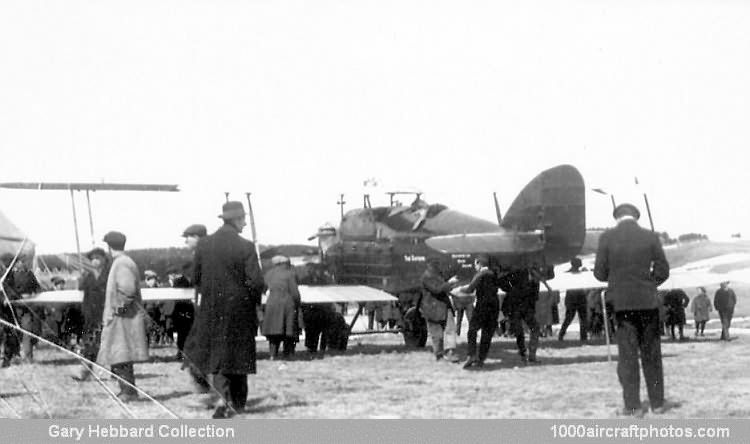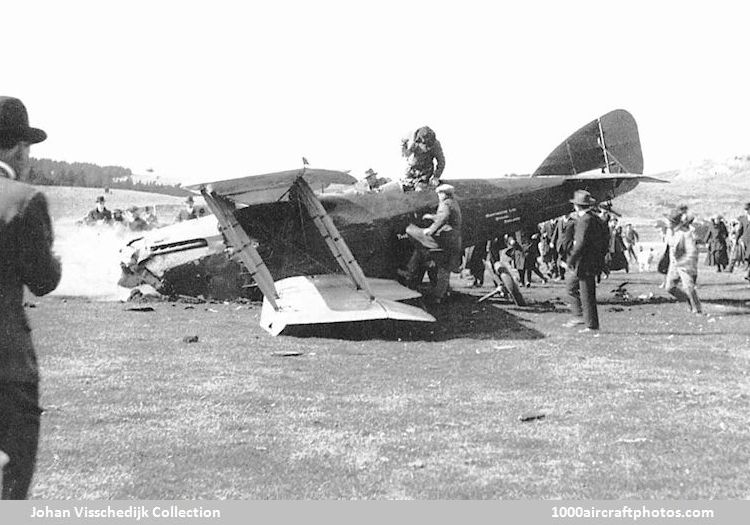Photographed at Quidi Vidi airfield, St. John's, Dominion of Newfoundland, April 17 - July 17, 1919, source unknown
04/30/2008. Remarks by
Johan Visschedijk: "On March 25, 1919, Freddie 'Fred' P. Raynham became the fifth British entry to the Ocean Race when he handed his name in to the Royal Aero Club. The Daily Mail of London, UK, had offered £10,000 prize for the first to fly the Atlantic Ocean non-stop. Fred Raynham was a staff member of the Martinsyde Aeroplane Company of Woking, and the entered aircraft was an one-off Martinsyde aircraft named Raymor (a combination of the names of the pilot,
Raynham, and
Morgan, the navigator). The aircraft is also (incorrectly) stated as the Martinsyde Type A, the Type 1, the F.2, the F.4, and the F.6.
The aircraft configuration came close to an enlarged version of the two-seat two-bay wings version of the F.4 Buzzard. It had a span of 41 ft (12.50 m) and a length of 26 ft (7.92 m) and was fitted with a 285 hp Rolls-Royce Falcon twelve-cylinder, liquid-cooled V-engine. Fuel tanks had a total capacity of 370 gal (1,400 l) giving it a range of 2,500 mls (4,023 km) at an average speed of 100 mph (161 kmh). All-up weight was 3,250 lb (1,474 kg).
Arriving at St. John's, Dominion of Newfoundland, aboard the steamer Sachem, on 11 April, 1919, the first attempt was made on May 18, 1919.
(
Johan Visschedijk Collection)
On take off the aircraft dipped in soft spot, the landing gear dug in and the aircraft hit the ground and was severely damaged. The navigator, Charles W.F. Morgan, sustained injuries that incapacitated him for a second attempt. After the aircraft was rebuilt, this second attempt took place on July 17; the navigator was Lieutenant Biddlecombe. The aircraft became airborne, but nose-dived into the ground and was completely wrecked, both crew escaped injuries. No further attempts were made.
Fred Raynham (born July 15, 1893) had an impressive life, at the age of 17 he gained the 85th Aviators Certificate of the Royal Aero Club on May 9, 1911, the same year he became (according the Guinness Book of Air Facts & Feats) the first British pilot to survive a spin (probably first in the world), flying an Avro biplane that stalled while climbing through fog. In January 1912 he became a flying instructor and subsequently a well-known racer. On February 4, 1914, he set a height record of 15,000 ft (4,572 m) at Brooklands, flying an Avro biplane. During WW I and the inter-wars years he became one of the top test pilots. He died of a stroke in April 1954."

